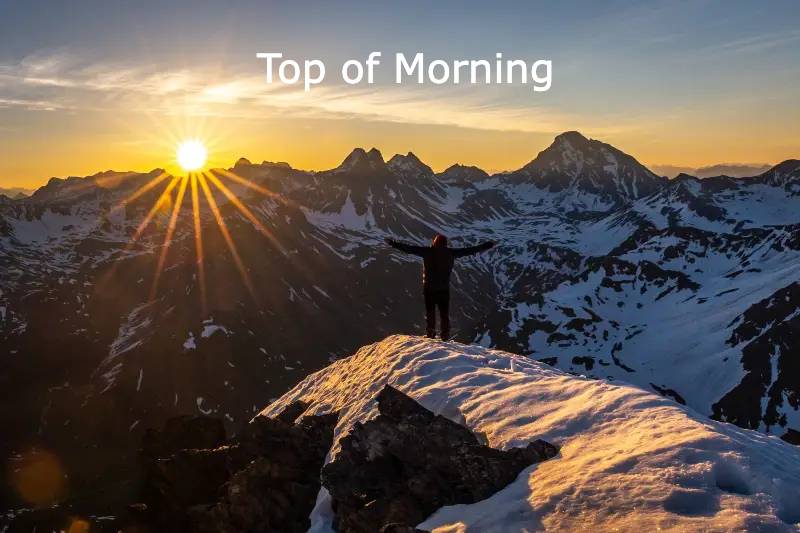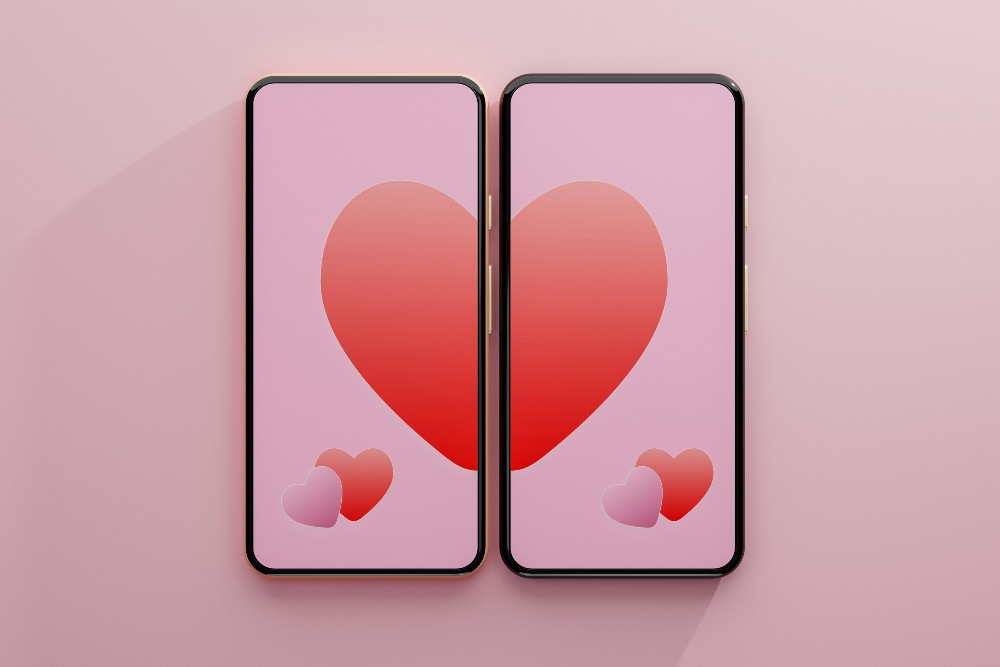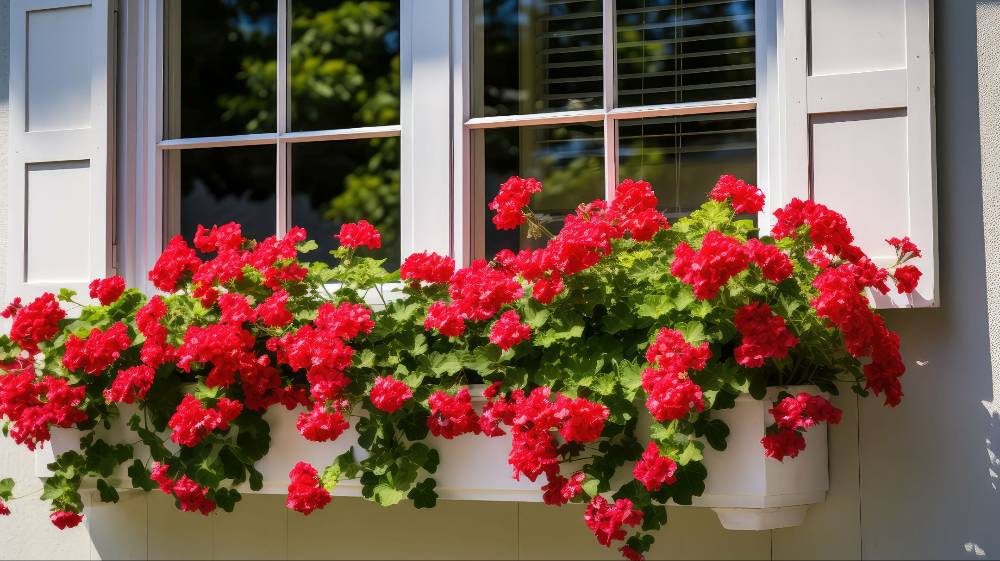English is a very old language that goes back many generations. Because of this, it has changed drastically over time, leaving us with some interesting expressions and sayings. In many cases, we don’t really understand the meanings of these sayings or where they come from, but that doesn’t mean we don’t want to!
One such saying is “Top of the Morning”. We see it used in films and books, and we might hear people say it on St. Patrick’s Day, but what does it actually mean and where does it come from?
The Origins of Top of the Morning
As with all old sayings, it is difficult to determine exactly where this expression comes from. However, research tells us that it was most likely a popular greeting used by the working class all across the United Kingdom and Ireland during the Victorian Era.
Although today we think of it as a quintessentially Irish expression, it may not have started there at all. The reason we think of it as Irish might just be because the Irish continued to use it long after its use faded out in Britain. Despite already having been used for almost 200 years across the British Isles, the saying reached its peak usage in Ireland in the early 1800s.
It started to fade out after 1830, but it must have had a resurgence in the early 1900s because P.W. Joyce mentioned it in his 1910 text, ‘English As We Speak It in Ireland’. He said it was “used everywhere, North and South” at the time.
Since then, the saying has fallen completely out of use in Ireland and Britain – despite what movie makers want you to believe – and is only really used in books, movies, and TV shows to create a sense of Irishness.
Top of the Morning Meaning
Even if we did know exactly where it came from, that wouldn’t tell us why it started, and that’s also a question with an interesting answer that may or may not be true. After all, what exactly is the “top” of the morning? Here are some theories:
- The top of the morning could be a reference to the top, or best part, of fresh milk – the cream. Since bringing in the milk was a common early morning activity in times when most households had their own cow, there could easily be a link between the two.
- Another theory is that it referred to the earliest part of the morning*, and may originally only have been used among people passing each other on the streets in the early hours.
- Or, “top” could simply refer to the best of any number of things; the head of a flower or the view from the crest of a hill, for example.
*Near the end of the third paragraph, this author of a gardening book published in 1716 refers to “the top of the Morning” as the start of the day.
Wherever it came from and whatever its original meaning was, it is clear that “top of the morning” is a friendly and cheerful greeting. It wishes the listener not just a good morning, but the best of the morning.
Top of the Morning Use Examples and How to Respond
Now that we have some idea of what it means and where it came from, you might be wondering how to use the expression in a sentence or how to respond if someone says it to you.
How is “Top of the Morning” Used Today?
- To use the expression yourself, you would greet someone – a stranger, acquaintance, or friend – in the morning by cheerfully saying, “Top of the morning to you!”
- You might hear others using it in a variety of situations, like in films that portray Irish people or on St. Patrick’s Day by people who believe they are mimicking Irish people.
- Occasionally, Irish people will use the expression as a joke, referring to how it is used in films and television to make people look more Irish, even though it is no longer used in Ireland.
How Should You Respond?
In the unlikely situation that someone does say “top of the morning” to you, you might have a moment of blankness as you wonder how to respond. Muttering out a “thank you” or “same to you” before the person walks away will work just fine, but there is actually a correct response to this good wish.
When the expression was still popular, back in the Victorian Era, the correct response to the greeting, “top of the morning to you” was, “And the rest of the day to you.” When you say this, you return the greeting to the well-wisher, but you also increase it by wishing them a good day – not just the morning.
Is “Top of the Morning” Still in Use?
It is rare that you will hear the expression being used in daily conversation these days. If you do, it will likely be a joke or someone who thinks they are being Irish. However, the greeting has not been used in Ireland for many years, and its use by tourists and films to portray Irishness is often frowned upon by the Irish.
Many of them even see it as an insult to their rich culture and an untrue stereotype or cliche of their personalities and lifestyles. They feel that they are being made fun of, rather than taking it as a compliment that people want to be like them.
Today, the expression is considered to be Hollywood Irish, and using it to greet an Irish person is more likely to earn you an irritated look or a mild insult than a friendly return greeting.
Synonyms for “Top of the Morning”
So if you can’t use “top of the morning” to greet Irish people, what should you say to them? Well, if you want to sound old-timey without insulting anyone, you could say “good morrow to you” or just “good morrow,” but your safest bet is simply to say “hello” or “good morning.”
If these options are too boring, you could try one of the following greetings:
- Hi there
- Hey
- Greetings
- Salutations
Conclusion
With an old language like English, it can be difficult to track the origins of specific words and phrases. But, to the best of our knowledge, the phrase, “top of the morning” originated in Great Britain and spread to Ireland.
The greeting was commonly used to wish friends or passersby the best of the morning, possibly referring to the cream on top of the milk or the flower at the top of the stem. The most common response to the greeting was, “And the rest of the day to you.”
Despite popular belief, the Irish no longer use this expression. It is largely used in Hollywood to portray Irishness, and many Irish people see it as an unwelcome stereotype or cliche. You’d be far better off, when greeting an Irish person, to simply say ”good morning.”





